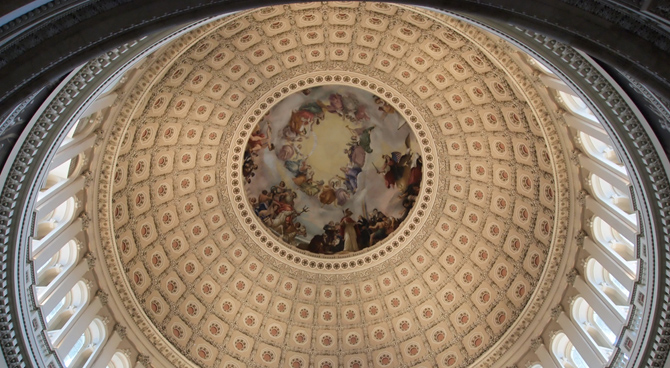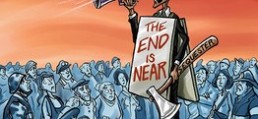Governing isn’t about blaming someone else. It is about choosing.
By PHIL GRAMM as appeared in Wall Street Journal on February 27, 2013 on page A13 in the U.S. edition of The Wall Street Journal
President Obama’s message could not be clearer: Life as we know it in America will change dramatically on March 1, when automatic cuts are imposed to achieve $85 billion in government-spending reductions. Furloughed government employees, flight delays and criminals set free are among the dire consequences the president has predicted. If the Washington Monument weren’t already closed for repairs, no doubt it too would be shut down.
Scare tactics such as these are similar to the ones that were made when I co-authored the first sequester legislation in 1985, the Gramm-Rudman-Hollings Balanced Budget and Emergency Deficit Control Act. The 1986 sequester was triggered anyway, but the predicted disaster never came. The nation survived then. It will now.
The president’s response to the sequester demonstrates how out of touch he is with the real world of working families. Even after the sequester, the federal government will spend $15 billion more than it did last year, and 30% more than it spent in 2007. Government spending on nondefense discretionary programs will be 19.2% higher and spending on defense will be 13.8% higher than it was in 2007.
For a typical American family that earns less than it did in the year President Obama was elected, the anguished cries and dark predictions coming out of the White House should elicit not sympathy but revulsion.
When the 1985 sequester was created, the formula for cuts was closely examined, debated, amended and agreed to by a Democratic House and a Republican Senate and White House. Today’s sequester is denounced because of the allegedly arbitrary nature of its across-the-board cuts. Yet the sequester formula that goes into effect on Friday preserves the spending priorities legislated by the Congress and the president, including exemptions and limitations they favored when the Budget Control Act of 2011 became law. The president himself first proposed the sequester. He may not like the way it works, but he has offered no real alternative.
Congress and the president might have worked together to avoid this outcome. Congress could have passed a budget resolution. The Republican House has repeatedly passed budgets, but the Democratic Senate hasn’t passed one in four years. Past sequesters allowed for fast-track consideration of alternatives or modifications to the cuts—but the 2013 version doesn’t allow for those.
Even if the sequester goes into effect, the magnitude of the automatic cuts won’t be very different from those imposed in 1986. Nor is the job of finding alternative spending reductions any harder than it was when alternative cuts were enacted in 1987.
The first Gramm-Rudman sequester took effect on March 1, 1986. It cut nondefense spending by 4.3% and defense spending by 4.9%.
The most recent estimate by the Congressional Budget Office for this year’s sequester is that nondefense spending will be cut by 4.6% and defense spending will be cut by 7.9%. While the sequester will reduce spending authority by $85 billion, the actual cuts that will occur in 2013 will be $44 billion. That is a mere 1.2% of total federal spending this year.
The first round of cuts under Gramm-Rudman weren’t so devastating that Congress and the president rushed to repeal them. In July 1986, Congress had the opportunity simply to stop the sequester after the Supreme Court invalidated its triggering mechanism. Instead it voted overwhelmingly to reaffirm the across-the-board cuts. The vote in the Democratic House was 339 to 72, and the Republican Senate approved it by acclamation, not deeming it worthy of a roll-call vote.
In 1987, Congress fixed the triggering mechanism and restored the sequester in Gramm-Rudman II. That deal would have cut nondefense discretionary spending by 8.5% and defense spending by 10.5%, far greater cuts than will be triggered this year. Yet a Democratic Congress and a Republican White House came together to replace that sequester with spending cuts in fiscal years 1988 and 1989 that were larger than those called for by Gramm-Rudman II.
While history shows that a divided government can enact significant spending cuts as an alternative to sequesters, that doesn’t appear to be the path Mr. Obama intends to follow. Instead of protecting civilian defense workers, the president will continue to force the Pentagon to buy biofuels at $27 per gallon to promote his green agenda. Instead of protecting children from cuts in nutrition programs, the president will continue to allow $2.7 billion of fraud and mismanagement he has identified in the food-stamp program. Instead of protecting Medicare from a 2% cut, the president will ignore $62 billion in annual waste that his administration has identified in Medicare and Medicaid.
But governing is not about blaming someone else—it is about choosing.
While Mr. Obama may choose to make the cuts ordered by the sequester in the most painful way possible, the best alternative—which is practiced every year to some extent—is allowing federal agencies to transfer funds among individual programs with congressional approval or by rearranging priorities as part of the March 27 resolution to fund the government for the rest of the fiscal year.
That doesn’t sound like a herculean task to Americans who make hard choices every day. Their choices have become harder and more frequent because the country’s political leaders seem unwilling to do the same in Washington.
— Mr. Gramm, a former Republican senator from Texas, is a senior partner of US Policy Metrics.





